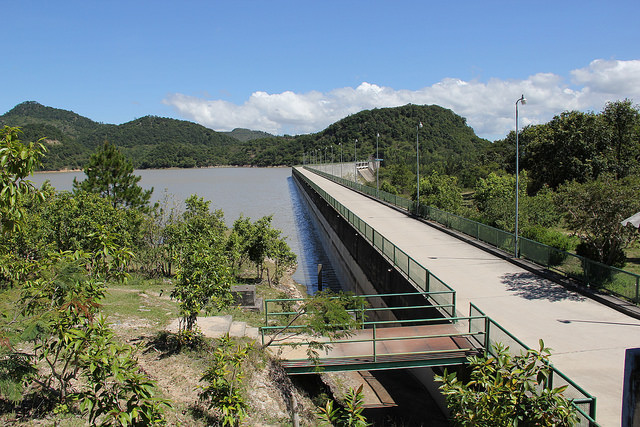Adaptation Fund Well-Positioned to Help Accelerate Climate Actions, in View of UN Climate Report
Washington, D.C. (October 11, 2018) — A new report from the top international body on climate change science released on Monday highlighted the urgency to accelerate mitigation and adaptation activities to help avoid potentially “long-lasting or irreversible” climate impacts, including the complete “loss of some ecosystems”.
The exhaustive report of the Intergovernmental Panel on Climate Change (IPCC), which included 91 authors from 40 countries, 6,000 references, and 42,000 reviews, stated that natural and human system impacts and “many land and ocean ecosystems and some of the services they provide have already changed due to global warming”, and risks from extreme weather, droughts, sea level rise and floods will be markedly higher if emissions are not curtailed to a 1.5-degree Celsius increase instead of the two-degree target called for in the 2015 Paris Agreement.
Climate-related risks to health, livelihoods, food security, water supply, human security and economic growth are projected to rise even with a temperature increase from 1 to 1.5 degrees, but rise further at two degrees — with robust repercussions at each stage. However, the report concluded that limiting global warming to a 1.5-degree increase would “require rapid and far-reaching transitions” in energy, land, infrastructure and industry.
Climate-related risks could be reduced by scaling up and accelerating mitigation at all levels, and by “incremental and transformational adaptation.” The report noted that there are a “wide range of adaptation options” that can reduce climate change risks. Those that reduce the vulnerability of human and natural systems such as ensuring food and water security, reducing disaster risks, improving health conditions and maintaining ecosystem services also promote sustainable development while reducing poverty and inequality. Increased investment in physical and social infrastructure will build resilience and adaptive capacities of societies.
Adaptation opportunities in small islands, low-lying areas and least developed countries are greater now rather than waiting for damage to worsen with increased warming. An increase in adaptation and mitigation investments would avoid greater costs that come with a 2-degree increase. Limiting warming to a 1.5-degree increase could also “reduce the number of people both exposed to climate-related risks and susceptible to poverty by up to several hundred million by 2050.”
Those at disproportionately higher risk of adverse consequences are disadvantaged and vulnerable populations, indigenous peoples and local communities dependent on agricultural or coastal livelihoods. Adaptation Fund projects are targeted precisely for those communities in developing countries that are most vulnerable to climate change.
“The IPCC report confirms what we have been seeing over the last few years, which is reflected in the continuing record demand for Adaptation Fund projects from vulnerable developing countries,” said Adaptation Fund Board Chair Victor Viñas. “We received a record US$ 264 million in new proposals for this week’s Board meeting alone. The Fund’s medium-term strategy is well-positioned to share practical on-the-ground knowledge and help accelerate these needed adaptation actions, but increased financial ambition is also needed to help meet these demands. This report is crucial for countries to consider as we head toward COP24 in December.”
The Adaptation Fund is one of the only funds to focus on funding concrete adaptation actions for the most vulnerable, while helping to build national capacities to adapt to climate change through its pioneering Direct Access modality. However, it largely relies on voluntary contributions, including a US$ 90 million resource mobilization target this year, to meet its growing project pipeline of more than a quarter billion US dollars.
The IPCC report added that greater climate change impacts on sustainable development, poverty and inequality could be avoided if global warming were limited to 1.5 degrees. A mix of adaptation and mitigation options implemented in participatory ways can enable rapid, systemic transition in urban and rural areas, and are most effective when local and regional governments are supported by national governments.
The report addressed the global adaptation finance gap, noting that “barriers include the scale of adaptation financing, limited capacity and access to adaptation finance”. Building adaptive capacities of governments, civil society, the private sector, indigenous peoples and local communities supports further ambition, while fostering social justice and equity in climate-resilient development widens opportunities for the poor and disadvantaged.
“When looking at this report, you see the huge risks in not enhancing climate ambition. But we also see the enormous potential to reduce impacts on ecosystems, human health and well-being and make it possible to achieve a more sustainable world for generations to come,” said Adaptation Fund Manager Mikko Ollikainen. “The Adaptation Fund, in funding concrete tailored projects to the most vulnerable that are country-led, inclusive and replicable while fostering environmental, social and gender principles and building country capacities, is well-positioned to help accelerate effective and innovative adaptation actions.”
ABOUT the ADAPTATION FUND
Since 2010, the Adaptation Fund has committed US$ 532 million including for 80 concrete, localized climate change adaptation projects in vulnerable communities of developing countries around the world, with over 5.8 million direct beneficiaries.
Communications: Matthew Pueschel, mpueschel@adaptation-fund.org or +1-202-473-6743
Attachments
| Attachment | Type | Size |
|---|---|---|
| Press release October 11, 2018 | 350 KB |


